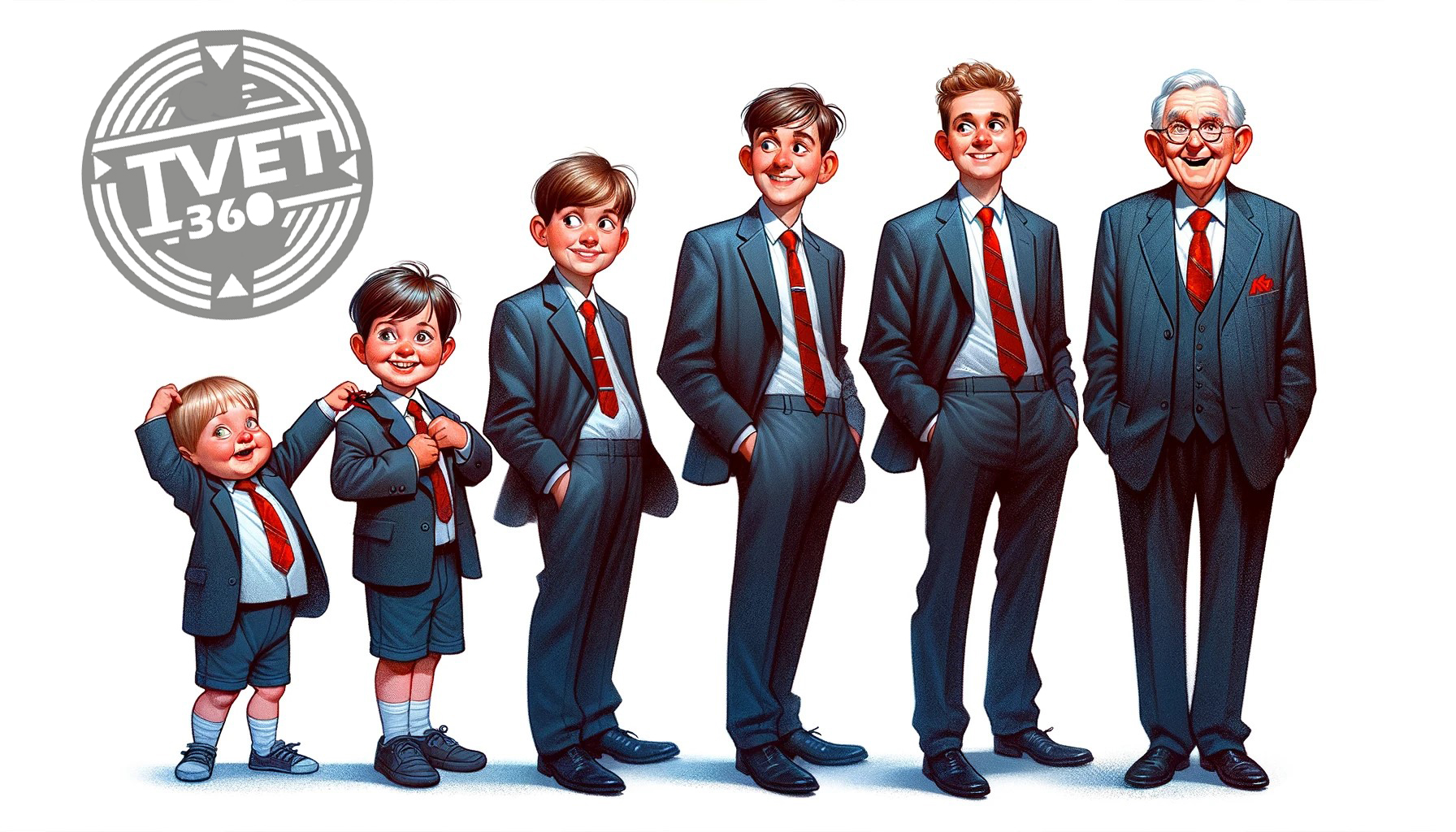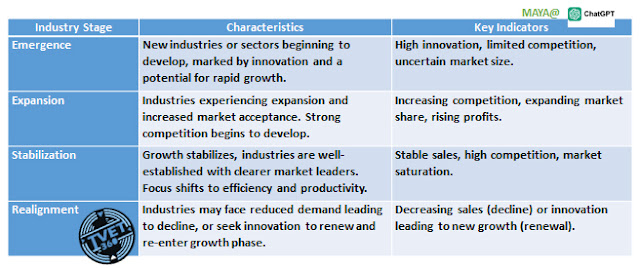7/04 - Industry Maturity (IMC)
 Nana Azhar
Nana Azhar
Industries, like all entities, traverse through a life cycle, evolving through various stages of maturity within an economy. This progression, known as the Industry Maturity Cycle (IMC), is shaped by multiple dynamic factors such as technological innovations, market demand saturation, the competitive environment, and the levels of innovation and productivity prevalent within the industry. As industries mature, their impact on the economy and workforce undergoes significant transformations:
Employment Opportunities: Mature industries offer stable jobs but have slower job creation compared to newer sectors. For example, traditional manufacturing might not expand as fast as the tech industry.
Economic Contribution: Established industries like automotive or chemicals have well-developed supply chains and infrastructure, boosting GDP and aiding growth in related sectors.
Technological Advancements: Mature industries may evolve slower technologically but continue innovating to stay competitive. Incremental improvements in processes, like automation in car manufacturing, keep them relevant.
Market Saturation: As industries mature, market demand stabilizes, leading to intense competition. Companies are pushed to increase efficiency and create unique products to maintain their market share.
Industry Evolution: Mature industries must adapt through strategies like mergers or exploring new markets to remain significant. For example, traditional retailers expanding into online sales.
Mature industries are vital for economic stability and growth, but balancing them with emerging sectors is crucial for continuous innovation and economic development.
The crucial role of mature industries in providing economic stability and fostering growth is undeniable. However, to nurture a thriving economic environment, there is a pressing need to strike a balance between mature industries and emerging sectors, ensuring a vibrant landscape of innovation and development.

Explanation
Emerging Stage: This initial phase is characterized by high levels of innovation as new products or services are introduced. It's a period of exploration and potential rapid growth, but with significant risks due to the unproven nature of the market.
Expansion Stage: In the growth phase, industries see increased consumer acceptance, leading to expanded market presence. This stage is marked by growing competition as more players enter the market, attracted by the initial successes of pioneering firms.
Stabilization Stage: Once an industry reaches maturity, the explosive growth of the growth stage slows to more stable levels. Most consumer demand is replaced by replacement or repeat purchases, and companies focus on differentiating themselves through efficiency and productivity enhancements.
Realignment Stage: Industries may enter a decline phase due to technological changes, shifts in consumer preferences, or increased international competition. Alternatively, sectors can experience renewal if new innovations or changes in market conditions allow for a resurgence in growth.
This breakdown of the IMC provides a generalized view of the lifecycle stages that industries may go through, highlighting the dynamic nature of market economies and the ongoing evolution of industry sectors.
The Industry Maturity Continuum (IMC) featured is a crucial framework for understanding the stages of development and evolution that industries undergo within an economy. It delineates the progression of industries through distinct phases—Introduction, Growth, Maturity, and Transition/Realignment—each characterized by specific challenges and opportunities. Here’s a detailed look at its importance and application:
Understanding Economic Dynamics: The IMC helps stakeholders, including policymakers, educators, and business leaders, understand the current state and potential future trajectory of different industries within the economy. This insight is vital for strategic planning and decision-making.
Aligning TVET Programs: For TVET, the IMC is instrumental in aligning educational programs with the specific needs of industries at different maturity stages. By understanding where an industry stands on the continuum, TVET programs can be designed to equip students with the skills that are most in demand, ensuring that the workforce development is proactive rather than reactive.
Driving Industry Advancement: The IMC also serves as a tool for industries themselves to assess their progress and strategize for advancement. By identifying their current stage, industries can implement targeted innovations and adaptations to enhance competitiveness and sustainability.
Policy Development and Implementation: For governments, the IMC provides a framework to develop policies that support industries in various stages of maturity. This can include fostering emerging industries, supporting growth industries with expansion efforts, stabilizing mature industries, or helping realign industries that are in decline or undergoing significant changes.
Future-Proofing the Workforce: By aligning TVET with the IMC, educators and policymakers can future-proof the workforce by anticipating the skills that will be required as industries evolve. This is crucial in preparing for technological advancements and shifts in global market dynamics.
In essence, the Industry Maturity Continuum is not just an analytical tool but a strategic guide that can help optimize the synergy between education, industry, and policy. It underscores the need for an adaptive and forward-thinking approach in education and workforce development to meet the changing demands of the economy.
Thank you for your time ❤️
Subscribe to my newsletter
Read articles from Nana Azhar directly inside your inbox. Subscribe to the newsletter, and don't miss out.
Written by
